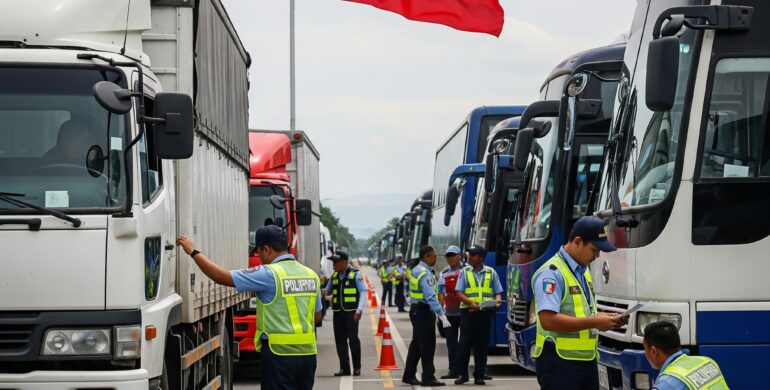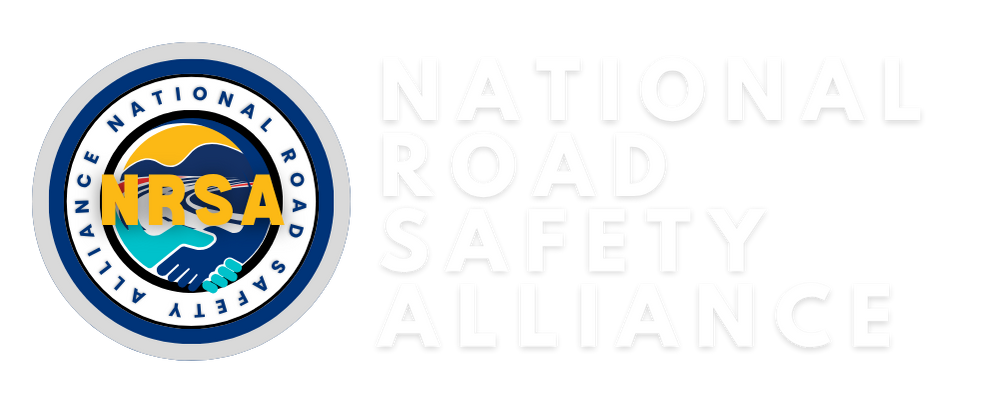The proposal to adopt a program similar to DOT Blitz Week in the Philippines presents a compelling solution to address the alarming rise in commercial vehicle accidents. Here’s a detailed breakdown of why it’s needed, the current landscape, and the challenges and benefits of implementation:
Why Adopt Something Like DOT Blitz Week in the Philippines?
The increasing number of fatal road accidents involving trucks, buses, and other commercial vehicles in the Philippines underscores an urgent need for more robust safety interventions. Data from the Philippine Statistics Authority (PSA) shows a concerning trend, with 13,125 deaths due to land transport accidents in 2023, the highest in over a decade. While reckless driving is a major factor (87.17% of incidents in 2024 according to PNP data), mechanical defects (2.52%) and poor road conditions (2.31%) also contribute significantly.
A systematic and surprise roadside inspection campaign like DOT Blitz Week can be highly effective in the Philippine context for several reasons:
- Enforce safety standards consistently: Current motor vehicle inspection systems (MVIS) and enforcement are often weak or inconsistent, particularly for provincial and cargo transport vehicles. A focused “Blitz Week” would provide a period of intensified, consistent enforcement, making it difficult for non-compliant operators to evade scrutiny.
- Identify and remove unsafe vehicles or unqualified drivers from roads: By conducting comprehensive inspections of vehicle components (brakes, tires, lights, steering, fuel systems, cargo securement) and driver credentials (licenses, medical certificates, hours-of-service compliance), unsafe vehicles can be taken off the road and unqualified drivers can be penalized, directly preventing potential accidents.
- Create accountability for fleet operators: The current system may allow some fleet operators to cut corners on maintenance and driver regulations. A “Blitz Week” would impose real consequences, including “out-of-service” orders, which would incentivize operators to prioritize safety year-round to avoid significant operational delays and financial penalties.
- Raise public and industry awareness about road safety: A highly publicized inspection campaign would draw attention to the importance of vehicle roadworthiness and driver compliance. This heightened awareness could lead to a cultural shift within the trucking and bus industries, promoting a stronger commitment to safety. It would also inform the public about safety standards and what to expect from commercial transport.
Current Landscape in the Philippines:
While the Philippines has existing road safety regulations and agencies, their effectiveness is hampered by several factors:
- Legal Framework: The primary traffic code is Republic Act No. 4136, the “Land Transportation and Traffic Code,” enacted in 1964. While various subsequent laws and orders address specific aspects (e.g., Seat Belts Use Act, speed limiter devices), the overall enforcement can be fragmented.
- Agencies Involved: Key agencies include:
- Department of Transportation (DOTr): The overarching executive department responsible for transportation systems.
- Land Transportation Office (LTO): Responsible for vehicle inspection and registration, driver’s license issuance, and enforcement of land transportation rules. The LTO has the authority to examine and inspect any motor vehicle for roadworthiness.
- Land Transportation Franchising and Regulatory Board (LTFRB): Regulates public utility vehicles (PUVs), including buses and trucks for hire, and can investigate complaints and cancel franchises.
- Philippine National Police – Highway Patrol Group (PNP-HPG): Involved in traffic law enforcement and accident investigation.
- Department of Public Works and Highways (DPWH): Responsible for infrastructure design and maintenance, which impacts road safety.
- Weak Enforcement and Compliance: As noted, existing MVIS (like private emission testing centers and vehicle roadworthiness tests) often suffer from weak or inconsistent compliance and enforcement, especially for vehicles operating outside major urban centers. There are also issues with varying and unclear regulations, such as truck ban ordinances across different cities in Metro Manila, leading to confusion and potential for violations.
- Human Error vs. Vehicle Condition: While reckless driving is a predominant cause of accidents, mechanical defects are a contributing factor, suggesting that better vehicle inspection and maintenance enforcement are critical.
Implementation Challenges and Considerations:
Adopting a “DOT Blitz Week” in the Philippines would require significant effort and coordination:
- Inter-Agency Coordination: Success hinges on seamless collaboration between the DOTr, LTO, LTFRB, PNP-HPG, and potentially local government units. Clear roles, responsibilities, and communication channels would need to be established.
- Legal Framework and Powers: Ensuring that inspectors have the legal authority to conduct comprehensive roadside inspections and issue “out-of-service” orders is paramount. Any legal ambiguities would need to be clarified or new legislation enacted.
- Capacity Building:
- Training of Inspectors: Inspectors would need extensive training on the standardized inspection procedures (similar to the North American Standard Level I Inspection), identifying various vehicle defects, and assessing driver compliance with hours-of-service and other regulations.
- Equipment and Facilities: Adequate equipment for roadside inspections (e.g., brake testing tools, tire pressure gauges) and temporary impoundment areas for out-of-service vehicles would be necessary.
- Manpower: A sufficient number of trained personnel would be required to cover key routes and maximize the impact of the inspections.
- Data Collection and Analysis: A robust system for collecting, analyzing, and reporting inspection data would be crucial for tracking compliance rates, identifying common violations, and evaluating the program’s effectiveness over time. This data could then inform future policy decisions and targeted interventions.
- Public and Industry Awareness Campaign: A well-planned public awareness campaign before and during the “Blitz Week” would be essential to inform drivers and operators, manage expectations, and mitigate negative impacts such as freight delays.
- Addressing Potential Disruptions: The industry implications mentioned (delays, increased freight rates) are real. Strategies to minimize these disruptions, such as providing clear guidelines and resources for compliance, could help.
- Sustainability: Beyond a one-off event, the goal should be to establish a sustainable system of regular, unannounced inspections to maintain consistent safety levels. “Blitz Week” could serve as a high-impact catalyst to kickstart this broader initiative.
In conclusion, while challenging, implementing a program akin to DOT Blitz Week in the Philippines is a vital step towards significantly improving road safety, reducing accidents involving commercial vehicles, and fostering a culture of accountability within the transport industry.


